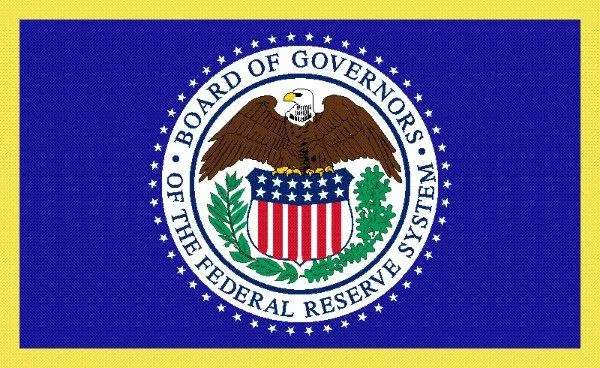In times of economic weakness, the role of the Federal Reserve becomes paramount as it takes center stage in implementing strategies to stabilize and stimulate the economy. The Fed, as the United States’ central banking system, employs a range of tools and interventions to address economic challenges and foster growth. This article delves into the various measures the Federal Reserve typically adopts when faced with a weak economy, shedding light on its crucial role in maintaining economic stability.
7 Strategies For The Fed To Deal With Economic Weakness
1. Monetary Policy and Interest Rates
One of the primary tools at the disposal of the Federal Reserve is monetary policy, which involves the manipulation of interest rates to influence economic activity. In times of economic weakness, the Fed often opts to lower interest rates to encourage borrowing and spending. By reducing the cost of borrowing, businesses and consumers are more inclined to invest and make purchases, thereby stimulating economic growth.
Conversely, during periods of economic strength, the Fed may choose to raise interest rates to cool off an overheating economy and prevent inflation from escalating. The delicate balance between low and high-interest rates showcases the Fed’s strategic approach to fostering economic health.
2. Quantitative Easing (QE)
In addition to adjusting interest rates, the Federal Reserve may implement a policy known as quantitative easing (QE) when the economy is grappling with weakness. Quantitative easing involves the purchase of financial assets, typically government securities and mortgage-backed securities, by the central bank. Through this process, the Fed injects money into the financial system, aiming to lower long-term interest rates and bolster lending.
Quantitative easing is a tool often deployed when traditional monetary policy measures, such as interest rate adjustments, reach their limits. By increasing the money supply and reducing the cost of borrowing, the Fed endeavors to stimulate spending and investment, providing a much-needed boost to a sluggish economy.
3. Forward Guidance
Forward guidance is a communication strategy employed by the Federal Reserve to manage expectations and guide market participants on the future path of monetary policy. In times of economic weakness, the Fed may use forward guidance to signal its commitment to maintaining accommodative policies for an extended period. By providing clarity on its intentions, the central bank seeks to influence market behavior and encourage economic activity.
Forward guidance can take various forms, including explicit statements about the expected duration of low-interest rates or indications of the economic conditions that would prompt a change in monetary policy. The goal is to anchor expectations and instill confidence in businesses and consumers, fostering an environment conducive to economic recovery.
4. Lender of Last Resort
The Federal Reserve serves as the lender of last resort, playing a crucial role in stabilizing the financial system during periods of crisis. In times of economic weakness, financial institutions may face liquidity challenges, making it difficult for them to meet short-term obligations. The Fed steps in as a lender of last resort by providing emergency funding to financial institutions facing liquidity shortages.
This lender-of-last-resort function is essential for maintaining the stability of the banking system and preventing a cascade of financial distress. By offering liquidity support, the Fed aims to prevent a systemic collapse that could have severe repercussions for the broader economy.
5. Collaboration with Fiscal Policy
While the Federal Reserve wields significant influence through monetary policy, its efforts are often more potent when complemented by fiscal policy measures. Fiscal policy, controlled by the government, involves taxation and spending decisions. In times of economic weakness, a coordinated approach that combines monetary and fiscal policy can be particularly effective in addressing challenges.
Collaboration between the Fed and fiscal authorities may involve targeted government spending, tax incentives, or stimulus packages aimed at boosting demand and supporting economic activity. This synergy ensures a comprehensive and synchronized response to economic downturns, leveraging the strengths of both monetary and fiscal tools.
6. Inflation Targeting
Maintaining price stability is a key objective for the Federal Reserve, and inflation targeting is a core element of its policy framework. In times of economic weakness, the Fed may adjust its inflation target to allow for a temporary increase in inflation. Allowing inflation to rise temporarily can be a deliberate strategy to stimulate spending and investment, as consumers and businesses anticipate higher future prices.
Inflation targeting provides the Fed with flexibility in responding to economic challenges. By signaling
a willingness to tolerate a brief period of higher inflation, the central bank can encourage borrowing and discourage hoarding of money, thereby supporting economic recovery.
7. Communication Strategies
Effective communication is a vital tool in the Federal Reserve’s toolkit, especially during periods of economic uncertainty. Clear and transparent communication enhances the central bank’s ability to manage expectations and shape market perceptions. The Fed frequently uses press conferences, speeches, and official statements to convey its policy decisions, economic outlook, and future intentions.
Transparent communication helps align market expectations with the Fed’s objectives, reducing uncertainty and enhancing the effectiveness of monetary policy. In times of economic weakness, the central bank’s ability to communicate its commitment to supporting the economy is crucial in instilling confidence and stabilizing financial markets.
See Also: What If Fed Raises Interest Rates?
Conclusion:
In conclusion, the Federal Reserve employs a multifaceted approach when confronted with a weak economy. Through the strategic use of monetary policy tools, including interest rate adjustments, quantitative easing, and forward guidance, the Fed aims to stimulate economic activity and maintain stability. Additionally, its role as a lender of last resort, collaboration with fiscal policy, inflation targeting, and effective communication contribute to a comprehensive strategy in navigating economic challenges.
As the economic landscape evolves, the Federal Reserve remains vigilant, ready to adapt its strategies to address emerging issues. The delicate balance between proactive intervention and cautious assessment defines the central bank’s role in steering the U.S. economy towards sustainable growth during times of weakness.


